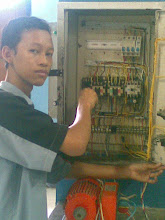First Measure the rice with a cup and put it into your cooking pot. Most of the time, rice cooker boxes will have a cup inside or you can use your own scooper for measurement.
One cup of uncooked rice will generate roughly one and a half cups of cooked rice.
The measuring cup that comes with your rice cooker is not the same size as a standard US measuring cup (240 ml or 1 cup). It's a cup by rice cooker industry standards (180 ml or about 3/4 cup). Unless the recipe calls specifically for rice cooker cup measurements, you'll need to adjust your measurements accordingly.
Second Rinse the rice. Read the packaging, as some rice does not need washing and is enriched with iron, niacin, thiamin, and folic acid; rinsing may be unnecessary and will remove any water-soluble vitamins and minerals in the rice. Unless the packaging insists that the rice does not need rinsing, however, it is safer and more hygienic to rinse it to remove any pesticides, herbicides, or contaminants that may be present.
-) Run tap water in the bowl. While the water is running, stir the rice. Continue stirring until the pot is full of water.
-) Tip the pot at an angle and drain the excess water out. Hold the bottom part with your hand so that you can grab any rice grains that may fall with the water.
Then Soak the rice for thirty minutes, if desired. This is not required, but some people prefer it. It may result in stickier rice.
Next Measure the water. Most rice cooker instructions recommend cold water. How much water you add depends on what kind of rice you're cooking and how moist you prefer it. One rule of thumb is to fill the cooking pot with the same amount of cups of rice you used, with an additional 1/2 cup. For example, if you made 2 cups of rice, pour in 2 1/2 cups of water. There are also graduated marks on the inside of many rice cookers indicating how much rice and water should be added. The USA Rice Federation recommends following the directions on the package that the rice came in, or using these guidelines in a pinch:
White, long grain - 1 3/4 cups of water per 1 cup of rice
White, medium grain - 1 1/2 cups of water per 1 cup of rice
White, short grain - 1 1/2 cups of water per 1 cup of rice
Brown, long grain - 2 1/4 cups of water per 1 cup of rice
Parboiled - 2 cups of water per 1 cup of rice
Still, you can't really go wrong if you just add two or 2.5 cups of water to each cup of rice; you don't want your rice too dry.
For Indian style rices like Basmati or Jasmine, less water is needed as a drier rice is desired, use no more than 1 1/2 cups of water per 1 cup of rice. Use only 1 to 1 if you washed the rice previously. It is ok to add bay leaves or cardamom pods directly to the rice cooker to enhance the flavor.
And Then Add a little bit of salt, butter or oil at this time, if desired.
Then Try to get any rice grains around the pot back into the water and level out the rice. Wipe the outside of the pot with a cloth or rag.
Next Place the pot into the rice cooker. Cover it, plug the cooker in, and press the switch to turn it on. The switch will click, like a toaster, when the rice is done. In some cookers, the rice will be warmed until you unplug the cooker.
Don't lift the lid to check on the rice. The cooking process depends on the development of steam inside the pot, so letting steam escape by opening the lid may result in improperly cooked rice.
The rice cooker automatically turns off when the temperature inside the pot exceeds waters boiling point (212 degrees F or 100 degrees C at sea level), which will not happen until all the free water has vaporized.
At Last Allow the rice to "rest" for 10-15 minutes before removing the lid. This is not required but is commonly recommended in rice cooker instructions, and is automatic in some models.[4] Unplugging the rice cooker or taking the pot off of the heat for this period will minimize the amount of rice that sticks to the pot.
skip to main |
skip to sidebar
followers
Entri Populer
-
Dalam sistem pengendali elektromagnetik ada dua diagram gambar yang sering digunakan, yaitu diagram kontrol dan diagram daya. Yang termasuk...
-
A. Rangkaian Utama (tanpa pengasutan) B. Rangkaian kontrol C. Tata letak sistem pengendalian D. Prinsip kerja pengendalian Moto...
-
I.BAGIAN -BAGIAN MOTOR 3 FASA Motor 3 fasa pada dasarnya terdiri dari Stator yaitu bagian yang diam (statis) dan Rotor yaitu bagian yang b...
-
Pengertian K3 (Kesehatan dan Keselamatan Kerja) adalah secara filosofis suatu pemikiran dan upaya untuk menjamin keutuhan dan kesempur...
-
1. Ahli Keselamatan dan Kesehatan Kerja (K3) • Peraturan Menteri Tenaga Kerja dan Transmigrasi R.I. No. Per.03/MEN/1978 tentang Penunjuk...
pencarian data
Arsip Blog
Mengenai Saya
another page blogger
- http://lutfiyanti.blogspot.com/
- http://klistrik.blogspot.com
- http://overloadlistrik.blogspot.com
- http://listrikcinta-damai.blogspot.com
- http://instalation-electric.blogspot.com
- http://nurulvia.blogspot.com
- http://goundingsystemsmknesaba.blogspot.com
- http://ipunkkawikire.blogspot.com
- http://jamaah-listrik.blogspot.com
- http://listrikhighvoltage.blogspot.com
- http://habibshaleh.blogspot.com
- http://listriknesaba.blogspot.com
- http://listrik3fase.blogspot.com
- http://listrik-stroom.blogspot.com
- http://plc86.blogspot.com














0 komentar:
Posting Komentar